
If you’re reading this from your desk — head tilted slightly forward, shoulders hunched, eyes glued to a screen — pause for a moment. How does your neck feel? Are your shoulders tense? Do you find yourself subconsciously rubbing your upper back at the end of each workday?
You’re not alone.
The modern desk job, despite being sedentary, places a surprising amount of strain on the body — particularly the neck and shoulders. Long hours of sitting, poor posture, and repetitive movements like typing or scrolling can lead to chronic discomfort, muscle tension, and even long-term spinal issues.
But the good news? Relief can be found in something as accessible and time-tested as yoga.
In this blog post, we’ll explore:
• Why neck and shoulder pain is so common among desk workers
• How yoga specifically targets this kind of tension
• A full 25-minute yoga sequence tailored for desk workers
• Tips to integrate these movements into your daily routine
Let’s dive in and get you moving toward comfort and better posture — one stretch at a time.
Why Desk Work Causes Neck and Shoulder Pain
- Poor Posture (Tech Neck and Rounded Shoulders)
When sitting for hours, many of us tend to crane our necks toward the screen or let our shoulders round forward. This unnatural position puts extra pressure on the cervical spine and causes muscles to overcompensate.
- Repetitive Motions
Typing, texting, and mouse movements may seem harmless, but over time, they lead to muscle imbalances and overuse injuries.
- Lack of Movement
When muscles stay in one position for too long, they lose flexibility, become stiff, and develop trigger points (knots).
- Stress
Psychological stress often manifests physically. Shoulders rise toward the ears, the neck tenses, and chronic discomfort sets in.


How Yoga Helps Alleviate Neck and Shoulder Pain
Yoga offers a holistic approach to relieving desk-related tension. Here’s how:
• Increases Mobility: Gentle stretches release stiffness and restore range of motion.
• Improves Posture: Yoga strengthens core muscles and encourages spinal alignment.
• Reduces Stress: Breathwork (pranayama) and mindfulness calm the nervous system and relax the body.
• Boosts Circulation: Dynamic flows and inversions increase blood flow to tight areas, aiding recovery.
Whether you’re a seasoned yogi or a complete beginner, this targeted yoga sequence is designed to be gentle, accessible, and effective.
The Yoga Sequence: 25 Minutes to Relieve Neck and Shoulder Pain
This sequence can be done at home or in a quiet space at the office. No special equipment needed — just a yoga mat or towel, and perhaps a yoga block or cushion for support.
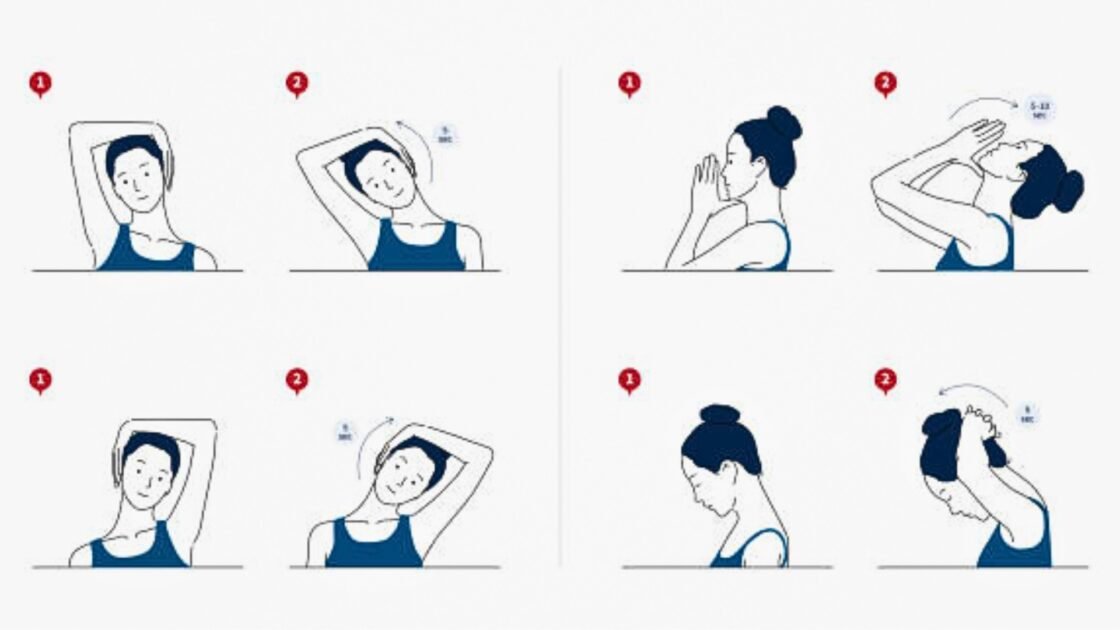
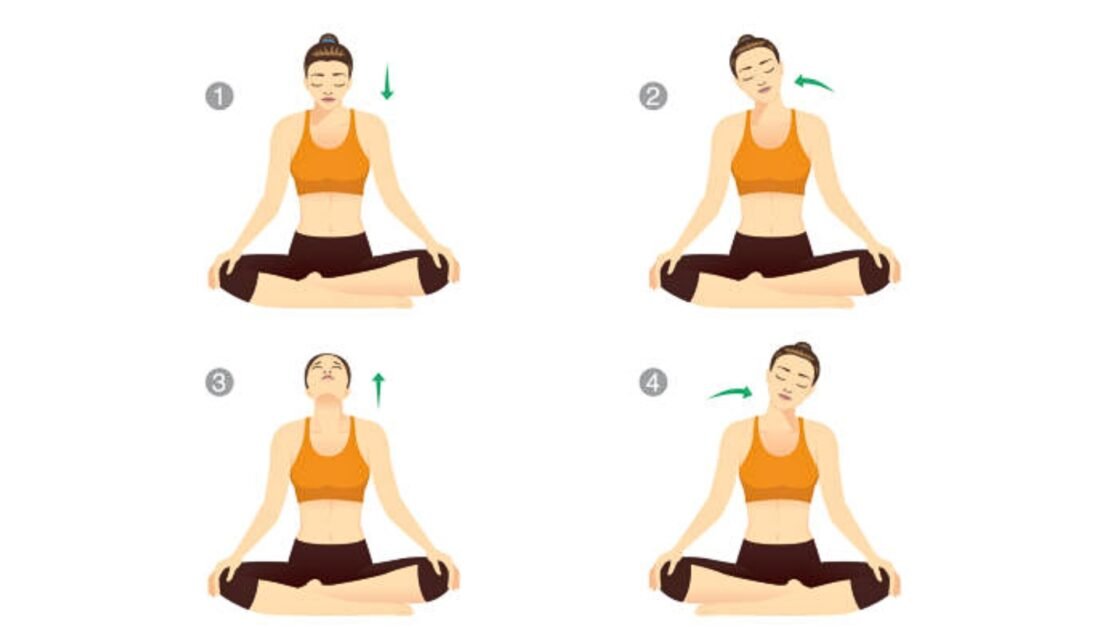
- Seated Neck Rolls (1 minute)
How to Do It:
• Sit in a comfortable cross-legged position or in a chair with feet flat.
• Relax your shoulders away from your ears.
• Slowly drop your right ear toward your right shoulder.
• Roll your head forward and to the left in a gentle half-circle.
• Continue for 30 seconds in one direction, then reverse.
Benefits:
Gently mobilizes the cervical spine and releases tension built up from prolonged screen use.
⸻
- Shoulder Shrugs and Rolls (1 minute)
How to Do It:
• Inhale, lift your shoulders up to your ears.
• Exhale, release them down your back.
• Repeat 10 times.
• Then roll shoulders backward 5 times and forward 5 times.
Benefits:
Improves circulation, breaks up stagnation, and relaxes the traps (trapezius muscles).
⸻
- Thread the Needle Pose (2 minutes each side)
How to Do It:
• Begin in tabletop (hands and knees).
• Slide your right arm underneath your left arm, palm facing up.
• Rest your right shoulder and temple on the mat.
• Keep the left hand grounded or extend it overhead.
• Hold for 2 minutes, switch sides.
Benefits:
Stretches the upper back, shoulders, and neck; helps realign the spine.
⸻
- Cat-Cow Pose (Marjaryasana-Bitilasana) (2 minutes)
How to Do It:
• From tabletop, inhale: drop your belly, lift your chest and tailbone (Cow Pose).
• Exhale: round your back, tuck your chin and tailbone (Cat Pose).
• Move with breath for 1-2 minutes.
Benefits:
Improves spinal flexibility and posture, especially after a long day of slouching.
⸻
- Puppy Pose (Uttana Shishosana) (2 minutes)
How to Do It:
• From tabletop, walk your hands forward while keeping hips above knees.
• Rest your forehead or chin on the mat, arms extended.
• Hold and breathe deeply.
Benefits:
Opens the shoulders and chest, lengthens the spine.
⸻
- Eagle Arms (Garudasana Arms) (1 minute each side)
How to Do It:
• Sit or stand.
• Extend both arms in front, bend elbows.
• Wrap the right arm under the left, press palms together.
• Lift elbows while dropping shoulders.
• Hold, then switch.
Modification: If full bind isn’t available, hold opposite shoulders instead.
Benefits:
Targets the rhomboids and rear deltoids — key areas for shoulder release.
⸻
- Shoulder Flossing with Strap or Towel (2 minutes)
How to Do It:
• Hold a strap or towel wider than shoulder-width apart.
• Inhale: raise it overhead.
• Exhale: slowly lower behind your back (only go as far as comfortable).
• Repeat slowly 10–15 times.
Benefits:
Increases shoulder mobility and breaks through tight fascia.
⸻
- Neck Side Stretch with Breath Awareness (1 minute each side)
How to Do It:
• Sit tall.
• Gently pull your head toward one shoulder using the opposite hand.
• Breathe deeply and hold.
• Switch sides.
Bonus: Add slight forward tilt for scalenes, slight backward tilt for SCM.
Benefits:
Targets the muscles most affected by “tech neck.”
⸻
- Sphinx or Baby Cobra Pose (2 minutes total)
How to Do It:
• Lie on your stomach.
• Place elbows under shoulders (Sphinx) or hands under chest (Baby Cobra).
• Lift your chest gently without over-arching the low back.
• Breathe here.
Benefits:
Reverses forward flexion, strengthens postural muscles.
⸻
- Legs-Up-the-Wall Pose (Viparita Karani) (5 minutes)
How to Do It:
• Sit sideways next to a wall.
• Swing your legs up and lie down.
• Arms can be at your side or overhead.
Optional: Place a pillow under hips for support.
Benefits:
Relaxes the nervous system, reduces inflammation in shoulders and neck.
⸻
- Guided Breath and Meditation (Pranayama) (5 minutes)
How to Do It:
• Sit or lie comfortably.
• Inhale deeply for 4 counts, hold for 4, exhale for 6.
• Repeat slowly for several rounds.
• Focus on breath and sensation in your shoulders melting down.
Benefits:
Deepens relaxation, relieves tension, resets your mental state.
⸻
Bonus: 3 Quick Office-Friendly Stretches
When you don’t have time for a full practice, try these moves at your desk:
A. Seated Shoulder Rolls
Roll your shoulders backward for 30 seconds to improve circulation.
B. Wall Chest Stretch
Stand near a wall, place your hand flat, and rotate away gently to open your chest.
C. Chin Tucks
Tuck your chin slightly and hold for 5 seconds. Repeat to train neutral neck posture.
⸻
Tips to Maintain Neck & Shoulder Health at Work
1. Ergonomic Setup: Monitor at eye level, feet flat on the ground, wrists neutral.
2. Move Every 30–60 Minutes: Set reminders to stand, stretch, or walk.
3. Stay Hydrated: Muscles need water to function properly.
4. Mind Your Breathing: Avoid shallow, upper-chest breathing — it tightens the shoulders.
5. Yoga Breaks: Even 5–10 minutes during lunch can be transformative.
⸻
When to Seek Professional Help
If your pain persists despite regular stretching, or is accompanied by numbness, tingling, or severe headaches, consult a physical therapist, chiropractor, or healthcare provider. Yoga is a powerful tool, but it’s not a replacement for medical care when needed.
⸻
Final Thoughts
Your body wasn’t meant to sit still and hunch over a screen all day. Yet in the modern world, that’s our daily reality. Yoga offers a simple, accessible antidote to this strain — no fancy equipment, gym memberships, or prior experience required.
By integrating these mindful movements into your daily or weekly routine, you’ll not only reduce pain but also cultivate awareness, energy, and resilience in both body and mind.
So unroll your mat. Breathe deeply. And give your neck and shoulders the care they deserve. If you’re ready to go deeper, explore our 200 Hour Yoga TTC Course in Rishikesh and begin your transformative journey today.
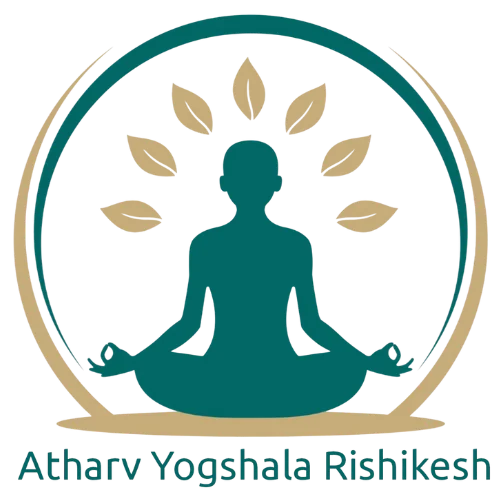

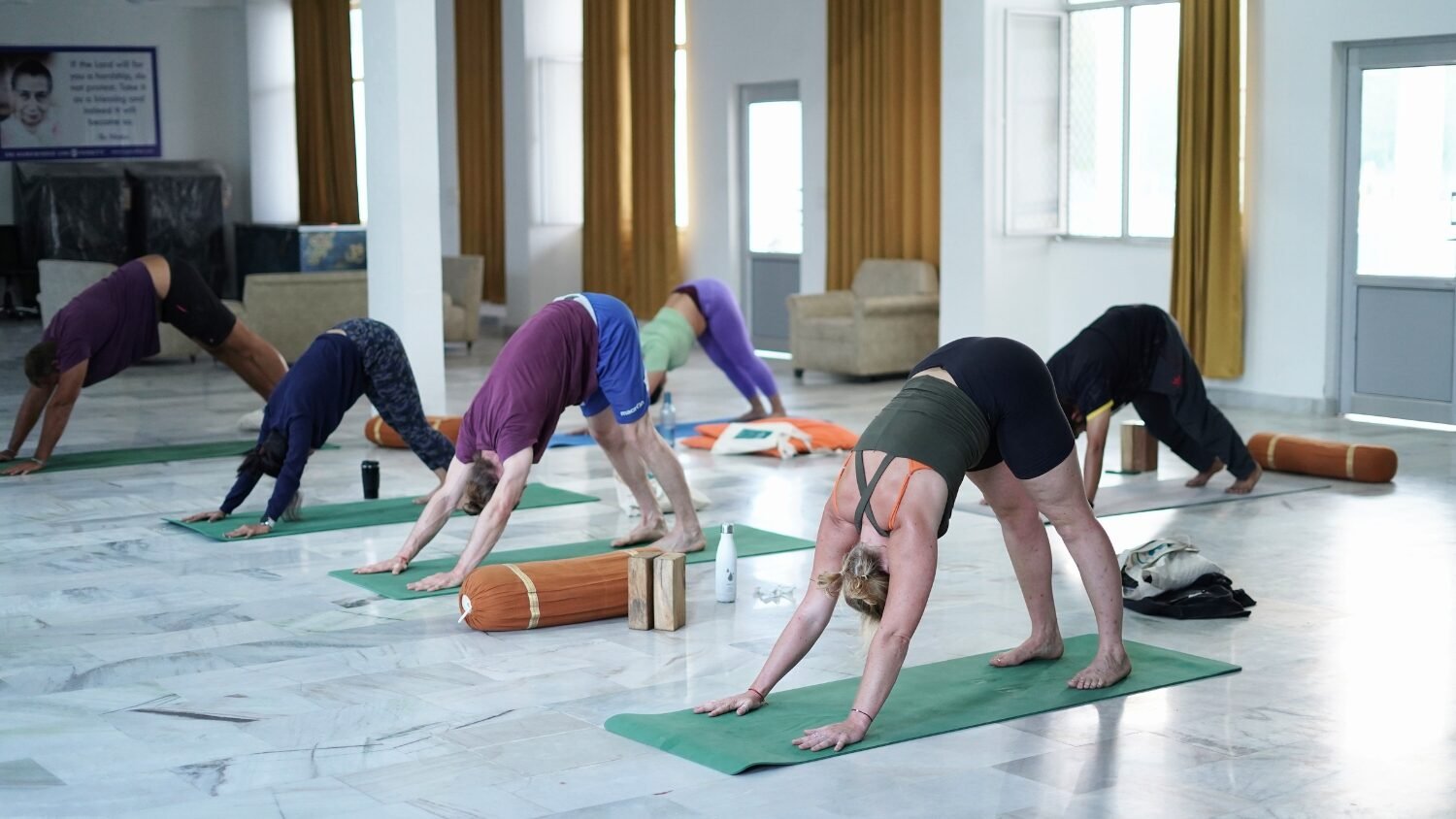
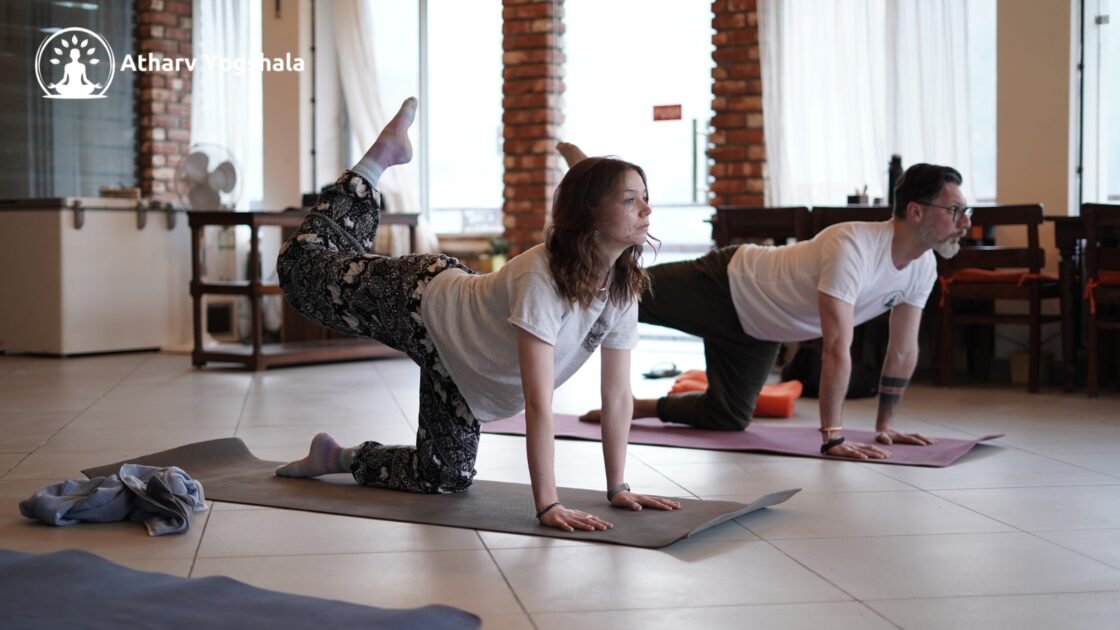


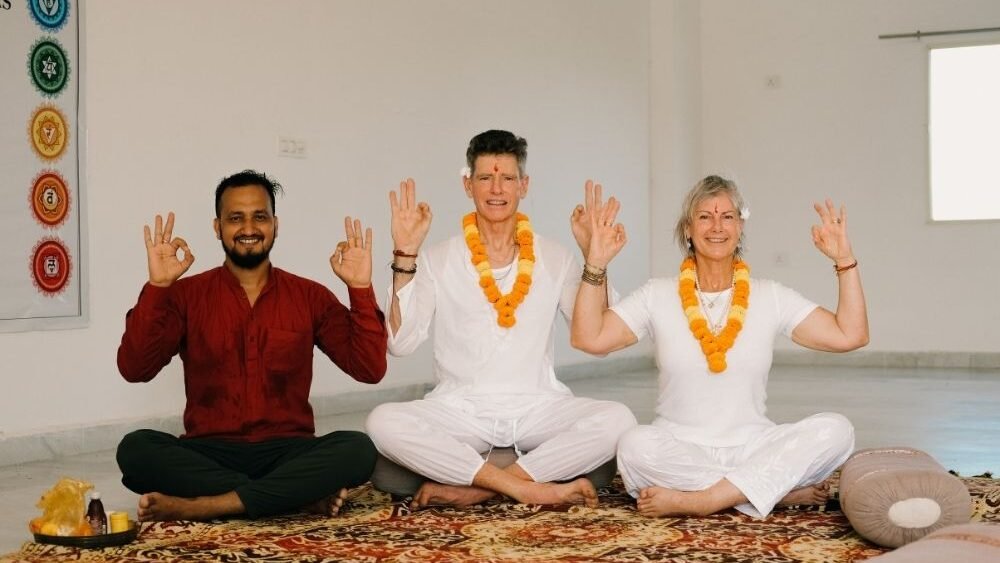

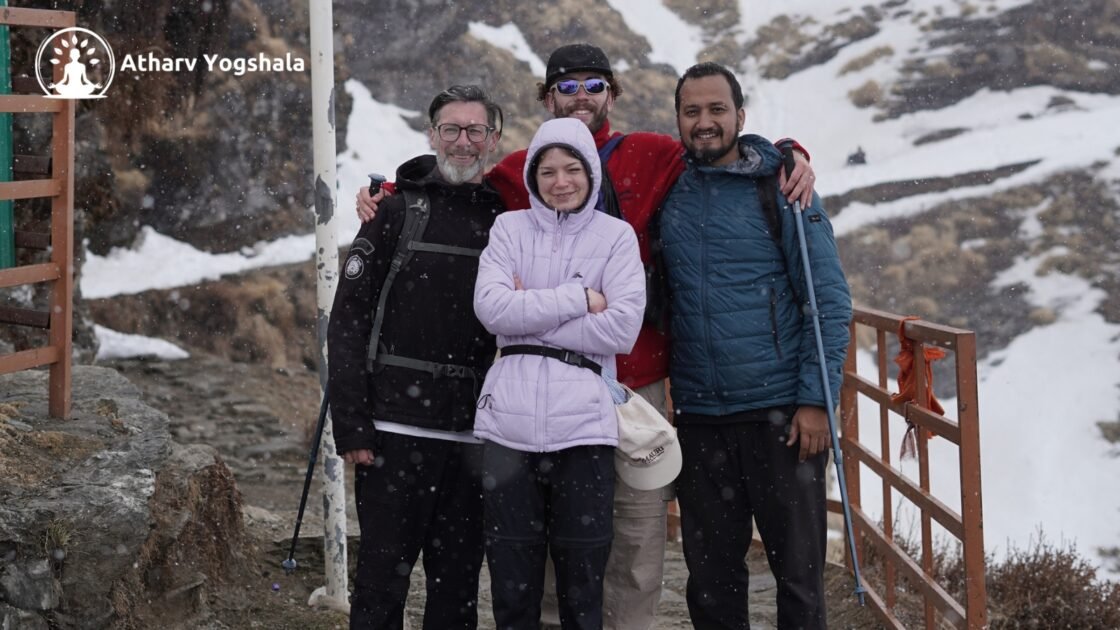



Leave a comment: